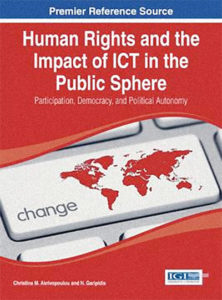G. SGUEO – M. Bani, “We-Trasparency” in Human Rights and the Impact of ICT in the Public Sphere, edited by C. M. Akrivopoulou e N. Garipidis, IGI Press, 2014
“Transparency” is a term that many speculate about. According to scholars, transparency has three inter-related aims: first, to inform citizens in a simple and understandable way on the government’s decisions; second, to foster civil society participation and engagement; and, third, to monitor and to prevent corruption. Notwithstanding these shared thoughts, much has to be done in liberal democracies. The European Commission estimates that corruption costs the EU economy roughly 120 billion EUR per year. The lack of transparency is both an economic and political problem, since corruption and opaque policies may develop degenerative forms of governance, which, in turn, lessens citizens’ political participation and understanding on how the governmental machine functions. This “participative deficit” is common in many Western democracies. The notion of popular empowerment, the “core of democracy,” has been diluted to the point that most citizens exercise their putative sovereignty only through periodic elections of representatives and thus have extremely limited input into political processes. This deficit is further exacerbated by the fact that elected representatives in fact embody a range of competing “interests”—party, ideological, corporate—which may or may not coincide with those of the voter. This chapter explores a new concept of transparency.

